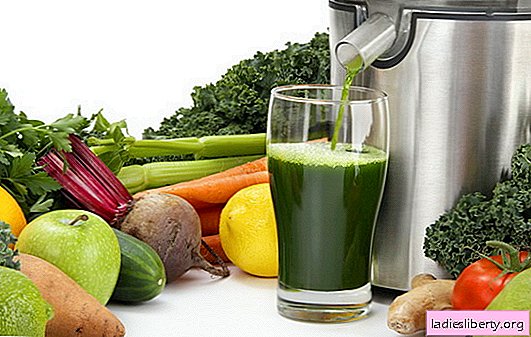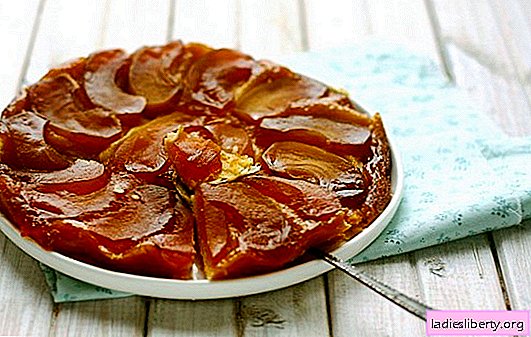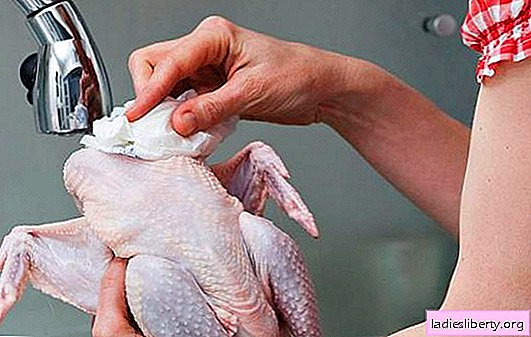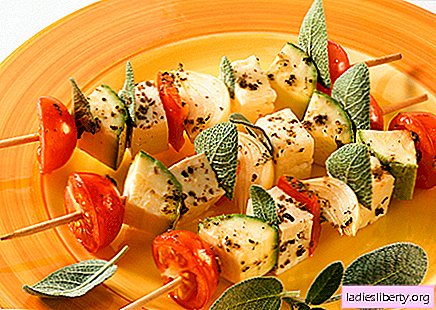
Diet, or a specially designed nutrition system, is one of the main components of the treatment of many diseases. Which is especially important to observe in diseases of the liver, bile-forming organs, stomach, intestines. For clinical nutrition, it is important not only the selection of certain products, but also the method of their preparation, the temperature of the served dish, the time and frequency of food intake, which depend on the particular disease. This feature was noticed almost a hundred years ago by the therapist Pevzner, who in 1920 has developed fifteen therapeutic diet tables for various diseases. These diets are still prescribed, and they give good results.
Diet number 5 - description and general principles
Diet No. 5 is one of the fifteen main therapeutic diets, or, as they are sometimes called, tables, which are prescribed for diseases of the gall bladder, liver, and biliary tract. Its purpose is to provide good nutrition to the patient, contributing to the normalization of the liver, improve bile secretion, with a sparing regimen for the liver itself. In compliance with the diet, glycogen accumulates in the liver, unloads fat metabolism and cholesterol, stimulates bile secretion and normal activity of the entire gastrointestinal tract.
Indications for use of table No. 5 are recovery periods after acute hepatitis and cholecystitis, without exacerbation - gallstone disease, chronic cholecystitis and hepatitis, cirrhosis of the liver (without liver failure), as well as chronic gastritis (without severe disturbances), chronic colitis (with a tendency to constipation), the postoperative period after removal of the gallbladder.
The diet contains foods with the usual content of carbohydrates and proteins, the restriction applies to fats (mainly refractory). Dishes containing oxalic acid, essential oils rich in cholesterol, purines, and products of fat oxidation that form during frying are excluded from the diet. An approximate daily diet of this diet includes 50 g of carbohydrates, 70 g of fat, 100 g of protein. Energy value is 2500-2900 kcal. If you make a balanced menu, eating will be not only healthy, but also delicious.
In dietary foods, the content of pectins, lipotropic substances, liquid, dietary fiber is increased. Fractional diet - five to six times a day. Dishes are mainly boiled and baked, less often - stewed. When cooking, flour, onions, carrots and other vegetables do not passivate. Products do not require thorough grinding. The exception applies to vegetables rich in fiber and sinewy meat - they are ground. Very cold dishes are contraindicated.
Diet number 5 - what foods you can eat
1) Bakery products: rye bread (yesterday’s pastry), wheat (first and second grade), products from inedible dough stuffed with boiled meat (fish), with apples, cottage cheese, dry biscuit, cookies.
2) Soups: milk with pasta, on a vegetable broth - vegetable and cereal, vegetarian borscht (cabbage soup), fruit, beetroot. If you need to add flour for dressing soups, it is dried (do not fry).
3) Fish: low-fat fish, boiled, baked after boiling, fish dumplings and meatballs, souffle.
4) Meat (poultry): lean and fat-free meat, without tendons and connective tissue (fascia), poultry meat without skin, low-fat mutton and pork, beef, rabbit, turkey, chicken, boiled meat, baked after boiling - chopped and whole piece , milk sausages, cabbage rolls, with boiled pilaf meat.
5) Dairy products: milk, yogurt, kefir, acidophilus, low-fat and bold curd, casseroles, puddings, lazy dumplings, sour cream (as an additive to dishes and seasoning), low-fat, mild cheese.
6) Fats: refined vegetable oil, butter (in dishes and in kind).
7) Cereals: various cereals, oatmeal and buckwheat, pilaf with carrots, dried fruits, pudding with cottage cheese, carrots, boiled pasta, groats are especially useful.
8) Eggs: baked protein omelet, soft-boiled, one yolk per day.
9) Vegetables: various - in boiled, stewed or raw form. As side dishes, independent dishes, salads, green peas (in the form of mashed potatoes), non-sour cabbage (pickled), onions after boiling.
10) Snacks: fruit salads, fresh vegetables, vinaigrettes, low-fat herring (soaked), squash caviar, salads from boiled fish, seafood, boiled meat, sausages - diet, milk and doctor's, low-fat, mild, low-fat ham.
11) Fruits, sweets: 9-berry fruits) baked, boiled and fresh (except sour), stewed fruit, jelly, dried fruit, mousse, jelly, pastille, marmalade, jam, honey, non-chocolate sweets, sugar (sometimes replaced with sorbitol, xylitol) .
12) Drinks: vegetable juices, from berries and fruits, coffee with milk, black, green tea, rosehip broth, wheat bran broth.
13) Sauces (spices): fruit sweet watering, cinnamon, vanillin, parsley, dill, sauces - sour cream, vegetable, milk (dried flour).
Diet number 5 - what foods can not be consumed
1) Bakery products: fried pies, pastry, puff pastry, very fresh bread.
2) Soups: mushroom, meat, fish broths, green cabbage soup, okroshka.
3) Fish: canned, salted, smoked, fatty fish species.
4) Meat (poultry): fatty meats, brains, liver, kidneys, goose and duck meat, smoked meats, canned food, most sausages.
5) Dairy products: with restrictions - sour cream, fermented baked milk, cream, fat cottage cheese, fat salty cheese.
6) Fats: chicken fat, lard - lamb, beef and pork.
7) Cereals: legumes.
8) Eggs: fried and hard boiled, with cholelithiasis restrictions - half the yolk in the dishes.
9) Vegetables: spinach, radish, sorrel, radish, garlic, green onions, mushrooms, pickled vegetables.
10) Snacks: caviar, smoked meats, canned food, fatty snacks and spicy.
11) Fruits, sweets: ice cream, chocolate, sour berries and fruits, products with cream.
12) Drinks: cold drinks, cocoa, black coffee, any alcoholic beverages, even low alcohol.
13) Sauces (spices): horseradish, pepper, mustard, limited salt intake (up to 10g / day).
Diet number 5 - examples of the menu
Monday
Breakfast (first): steamed protein omelet, butter, rice milk porridge, tea with lemon.
Breakfast (second): cottage cheese casserole, sour cream.
Lunch: vegetarian cabbage soup, stewed carrots, boiled meat, dried fruit compote.
Snack: cookies, tea with lemon.
Dinner: boiled pasta, butter, cheese, mineral water.
At night: kefir (glass).
Tuesday
Breakfast (first): a salad of apples and raw carrots, steam cutlets (meat) with milk sauce, coffee (with milk).
Breakfast (second): fresh apple.
Lunch: mashed soup (potato), stewed cabbage, boiled fish, fruit (berry) jelly.
Snack: cookies, rosehip broth.
Dinner: buckwheat groats, mineral water.
At night: kefir (glass).
Wednesday
Breakfast (first): cottage cheese with sugar and sour cream, milk oatmeal.
Breakfast (second): baked apple.
Lunch: vegetable soup, boiled chicken, boiled rice, milk sauce, fresh fruit compote.
Snack: fruit juice.
Dinner: mashed potatoes, boiled fish, white sauce, rosehip broth.
At night: kefir (glass).
Thursday
Breakfast (first): butter, pasta with meat, tea (with milk).
Breakfast (second): lazy dumplings, sour cream.
Lunch: potato soup with "Hercules", cabbage rolls, jelly.
Snack: fresh fruits (apples, plums).
Dinner: milk rice porridge, butter, tea, cheese.
At night: Kefir (glass).
Friday
Breakfast (first): buckwheat porridge, butter, cottage cheese (with milk), coffee (with milk).
Breakfast (second): baked apple.
Lunch: borsch (vegetarian), noodles with meat (boiled), sour cream, berry jelly.
Snack: cookies, tea.
Dinner: mashed potatoes, boiled fish, vegetable salad, mineral water.
At night: kefir (glass).
Saturday
Breakfast (first): meat cutlets (steamed), buckwheat porridge, tea (with lemon).
Breakfast (second): apple jam, carrot puree.
Lunch: milk soup (with pasta), cottage cheese pudding, sour cream, dried fruit compote.
Snack: fruit jelly.
Dinner: semolina porridge in milk (with prunes), mineral water.
At night: kefir (glass).
Sunday
Breakfast (first): boiled potatoes, herring, tea (with lemon).
Breakfast (second): baked apple.
Lunch: vegetarian cabbage soup, vermicelli, milk sauce, steam cutlets, compote.
Snack: cookies, rosehip broth.
Dinner: cottage cheese pancakes with sour cream, protein omelette, mineral water.
At night: kefir (glass).
Diet number 5 - examples of recipes
Recipe 1: Diet Potato Soup
Ingredients:
1. potatoes - 2 pcs.,
2. rice - 100 gr.,
3. onion - 1 pc. (small),
4. carrots - 1 pc.,
5. broccoli - 50 gr.
6. salt to taste.
Cooking method:
1. Peel and dice the potatoes, put in a 2-liter pan with cold water.
2. Add rice there, finely chopped onions and put on fire.
3. Grate the carrots on a fine grater and send to the soup along with broccoli inflorescences.
4. Cook the soup over low heat until vegetables and rice are ready, salt before turning off, and before serving, add greens and 1 tsp to a plate. vegetable oil.
Recipe 2: Caucasian Meatballs
Ingredients:
1. beef pulp - 150 gr.,
2. milk - 2 tbsp. l.,
3. apricot or prune - 10 gr.,
4. butter - 1 tsp.,
5. egg - 1 pc.,
6. sour cream - 20 gr.,
7. salt.
Cooking method:
1. Having cleaned the meat from tendons and fat, we pass it through a meat grinder twice.
2. Let the apricots or prunes in the water and, having freed from the seeds, cut into thin noodles.
3. To the minced meat, add milk, butter, eggs, prepared apricots or prunes, salt and mix.
4. Dividing the resulting mass into balls, bake until cooked, fill with sour cream and warm.
Recipe 3: Cheesecakes with Carrots
Ingredients:
1. cottage cheese 9% - 150 gr.,
2. carrots - 50 gr.,
3. butter - 20 gr.,
4. semolina - 5 gr.,
5. egg - 1 pc.,
6. sugar - 20 gr.,
7. wheat flour - 30 gr.,
8. a pinch of salt
Cooking method:
1. Having grated carrots on a fine grater, let it in water with the addition of butter for about 20 minutes, then, pouring semolina, cook, stirring.
2. Cool the resulting mass and add the cottage cheese with the egg, sugar, salt and most of the flour.
3. Form the cottage cheese pancakes and, having breaded them in the remaining flour, fry on both sides in butter, then bring to readiness in the oven.
Diet number 5 - useful tips
Usually, a diet is prescribed by a doctor in parallel with the main treatment - medication and physiotherapy. If you adhere to this power system for a long time, you can relieve exacerbations, achieve a state of stable remission, i.e. the disappearance of all signs of the disease, as well as to establish the work of the digestive system, to normalize their condition. Adhering to diet No. 5 also notice positive side effects that occur with the body - the weight normalizes (extra kilograms go away), there is an energy boost and a general improvement in well-being. Knowing the exact diagnosis, you can stick to the diet yourself, without consulting a doctor.
Suffering from diseases of the liver, bile-forming and excretory organs, even if they stopped dieting and switched to a normal diet, it is very important not to abuse the forbidden foods, especially fatty, smoked, spicy dishes, spirits, or to minimize them. Otherwise, there will be a load on the liver and organs that produce bile, which can trigger an exacerbation of the disease, and treatment will have to be started anew.
Comments











